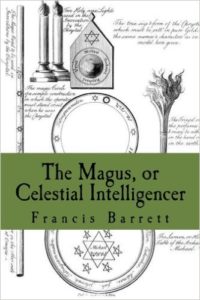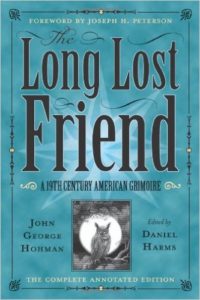 One of the fun things about writing my epic blackpowder fantasy WITCHY EYE (Baen, forthcoming) and now its first sequel (WITCHY WINTER) has been exploring real-world ideas about magic. It turns out, for instance, that right into the nineteenth century (at least), there have been many people who have thought of themselves as good (and maybe even superior, in an esoteric sense) Christians and who practiced magic.
One of the fun things about writing my epic blackpowder fantasy WITCHY EYE (Baen, forthcoming) and now its first sequel (WITCHY WINTER) has been exploring real-world ideas about magic. It turns out, for instance, that right into the nineteenth century (at least), there have been many people who have thought of themselves as good (and maybe even superior, in an esoteric sense) Christians and who practiced magic.
And their spellbooks are still in print.
Francis Barrett’s The Magus contains parabiblical stories of the sort you expect to read in Schneemelcher’s collection of New Testament Apocrypha or Charlesworth’s Pseudepigrapha. We read that Adam brought the Philosopher’s Stone (that’s right, the one in Harry Potter, at least in the UK edition, before editors assumed Americans wouldn’t get it) out of Eden after the Fall. We are told about the importance for a magus of living a strictly moral life right alongside diagrams of astrological medallions, esoteric alphabets, and  flat-out spells (want to silence barking dogs? put a dried dog’s tongue in your shoe; want to compel a women (sic!) to tell the truth? lay a whole frog’s tongue over her breastbone while you interrogate her).
flat-out spells (want to silence barking dogs? put a dried dog’s tongue in your shoe; want to compel a women (sic!) to tell the truth? lay a whole frog’s tongue over her breastbone while you interrogate her).
One of the biggest ethnic groups in the US is and has been German (that’s less obvious than it used to be, because over the course of two world wars, some German-Americans anglicized their names). And one of the most wildly popular grimoires of the nineteenth century was a German spellbook in the braucher tradition call Der Lange Verborgene Freund (The Long-Lost Friend), by immigrant and wizard Johann George Hohman.
The line between the Friend’s spells and prayers is often hard to find. Saints are invoked, morality is enjoined, and letters are written to heaven by wizards of faith who are willing to try to invoke celestial aid. A braucher or hexenmeister is a healer and a benevolent figure in the community, and not a warlock.

 Follow
Follow






































2 Responses to Witchy Eye: Real-World Christian Grimoires